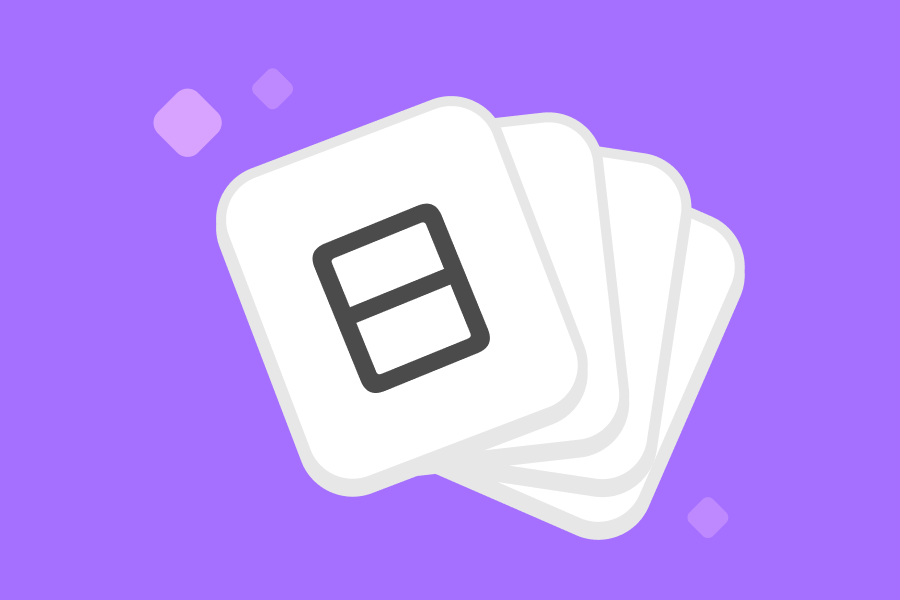Japanese has 3 writing systems, which can make it challenging for Japanese learners to read and write in their new language! Each of the writing systems—hiragana, katakana, and kanji—has its own history and uses, and Duolingo has tools for learning all 3. 🙌
Here’s how to practice your Japanese reading skills on Duolingo!
How Duolingo teaches Japanese characters
Japanese learners have to learn 3 new writing systems and when to use each. We’ve gamified Japanese characters in new exercises that allow you to practice tracing, spelling, and reading hiragana, katakana, and kanji. Look for the writing system feature at the bottom of your home screen—there you’ll find 3 tabs with interactive charts!
 |
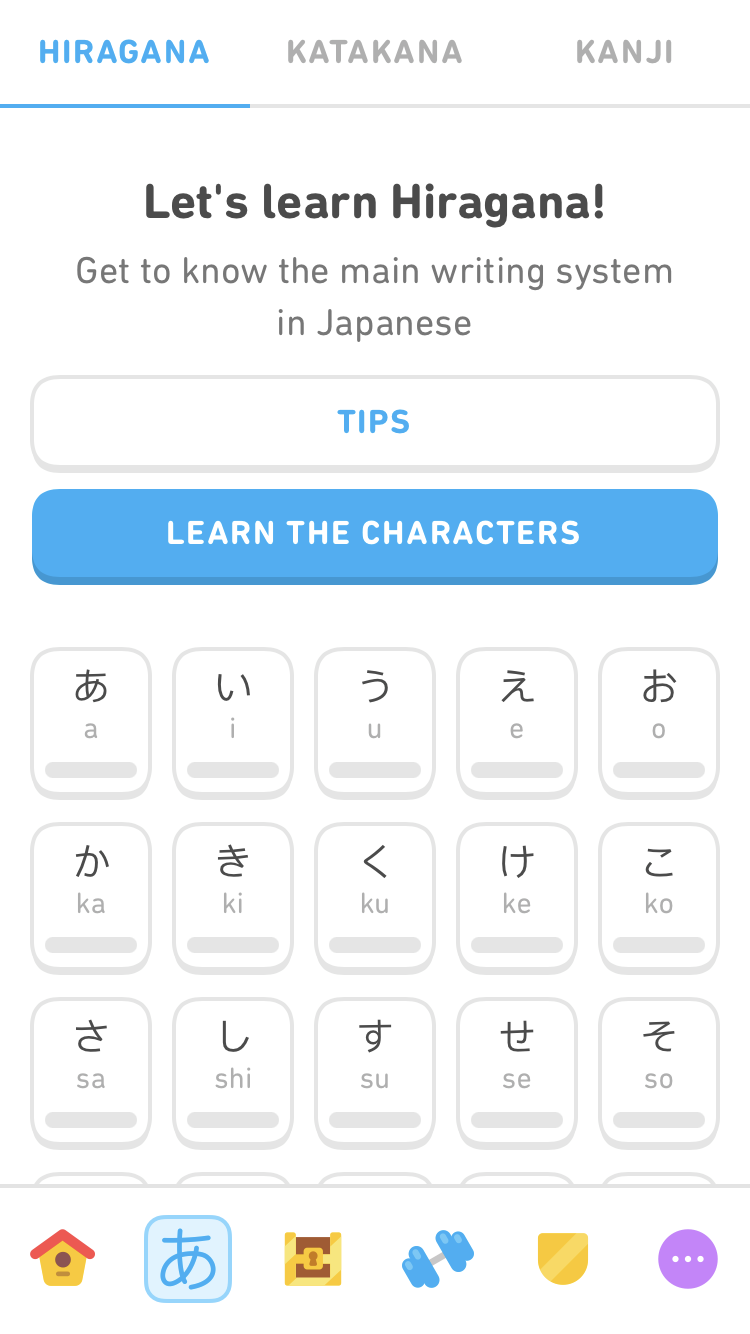 |
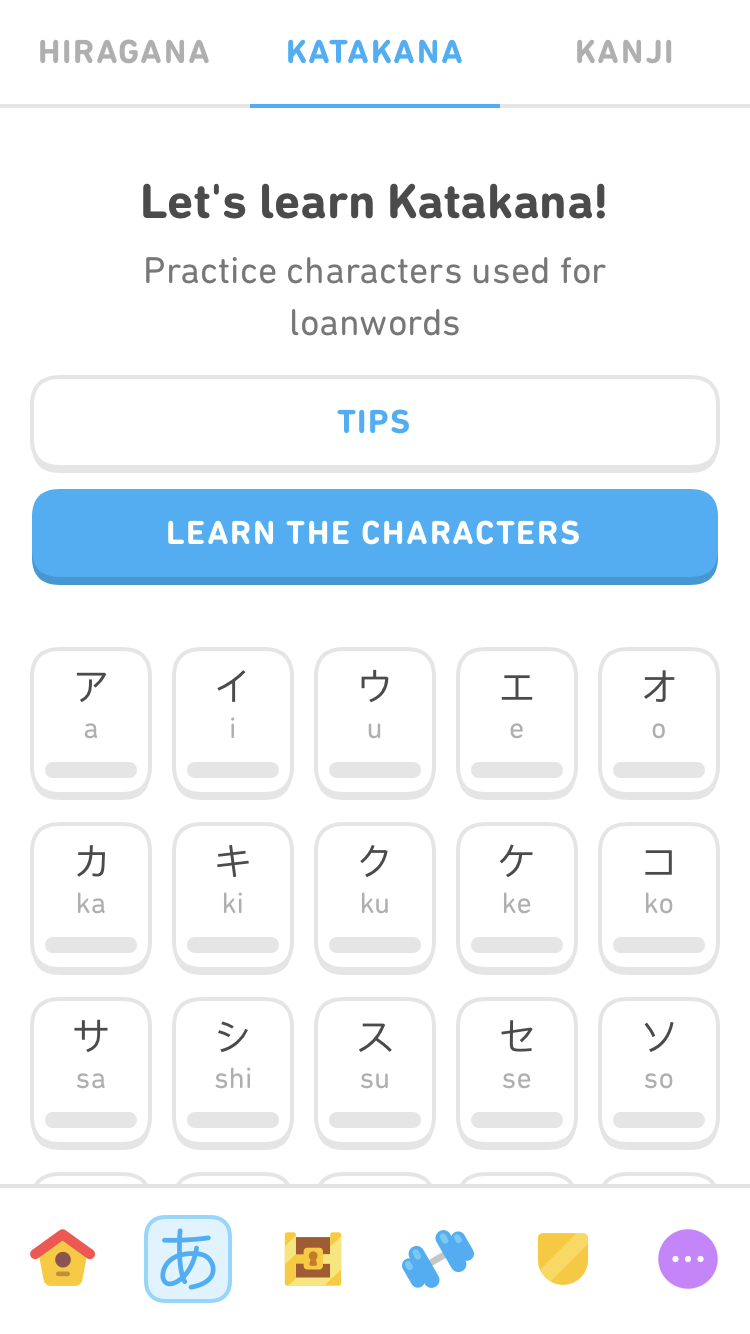 |
By clicking on the “Learn the Characters” button, you’ll work through a series of lessons to learn the characters in the chart. The characters light up as you make steady progress on your path to Japanese literacy!
In these lessons, you’ll trace the characters so you gain more familiarity with what they look like. Even though this may feel like writing practice, these exercises are actually helping you learn to read by teaching you to recognize the shape of each character! You’ll also answer multiple choice, matching, and spelling questions to practice connecting the written symbols to their sounds, so you’ll be working on your Japanese pronunciation, too.
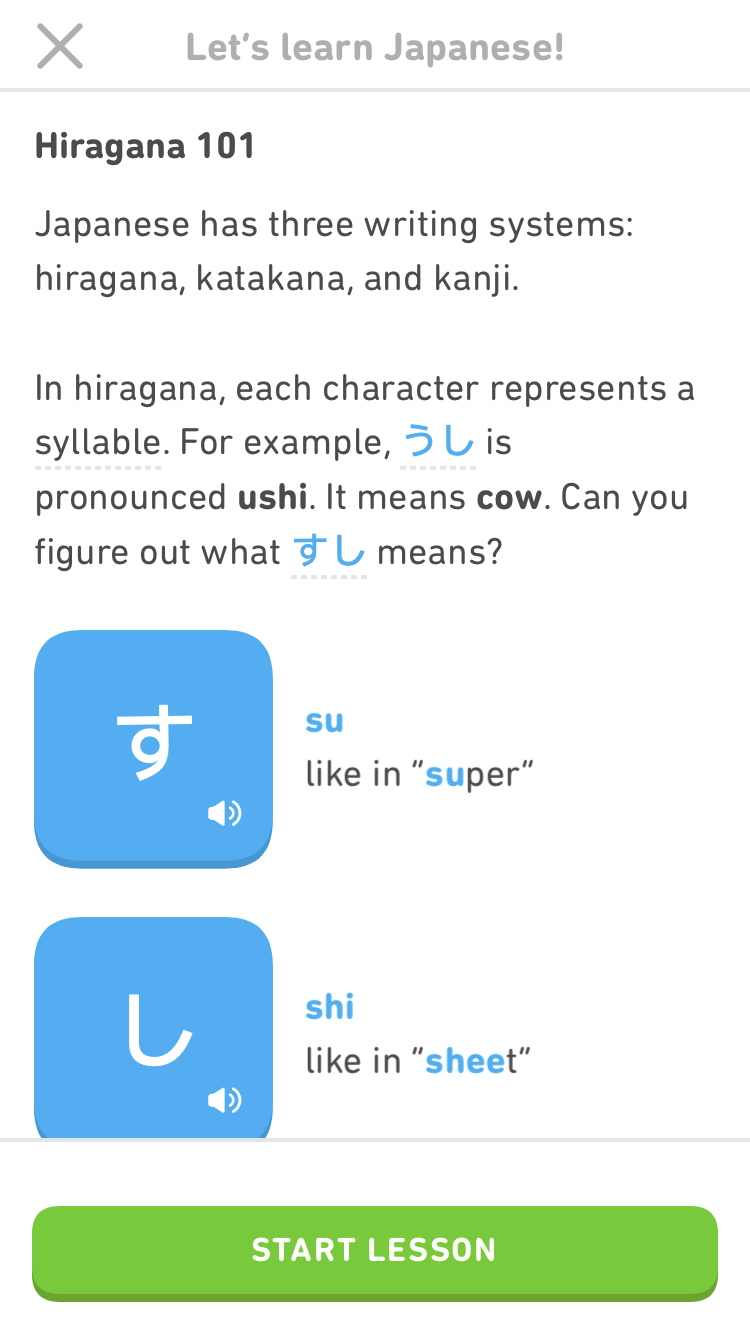 |
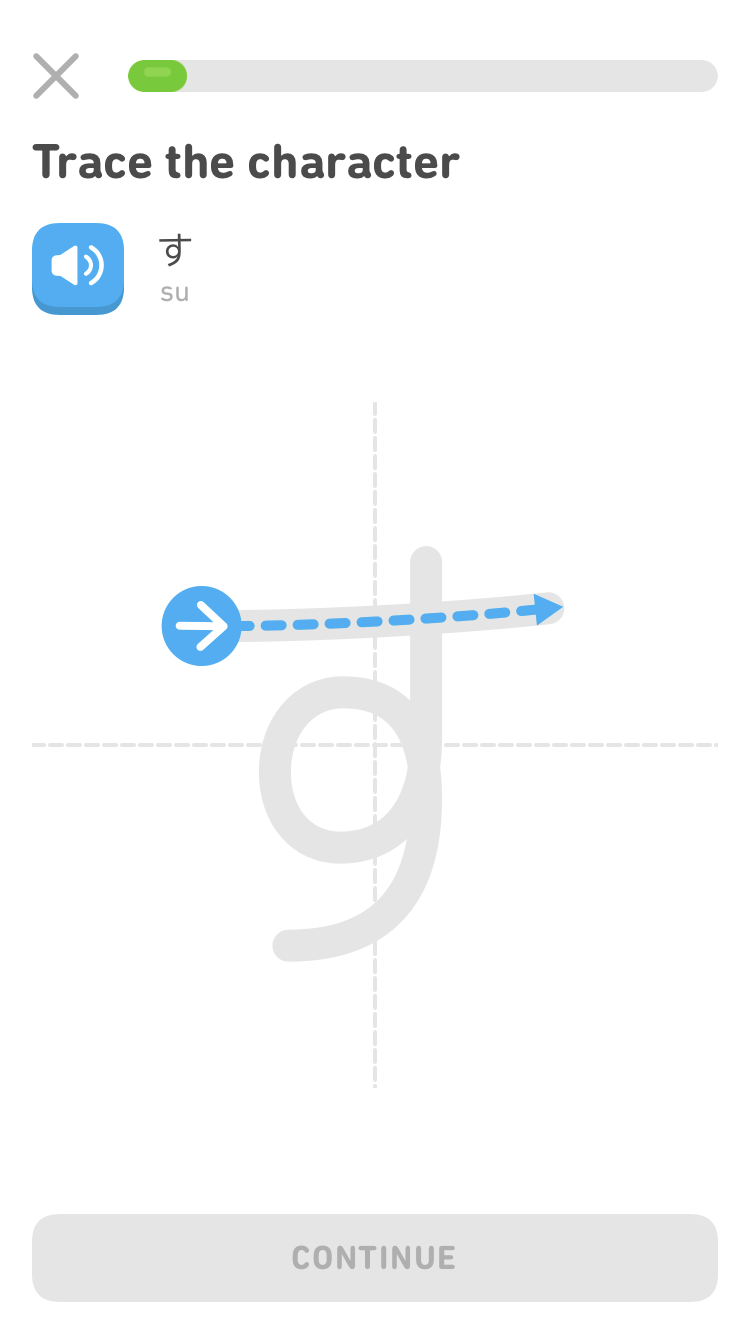 |
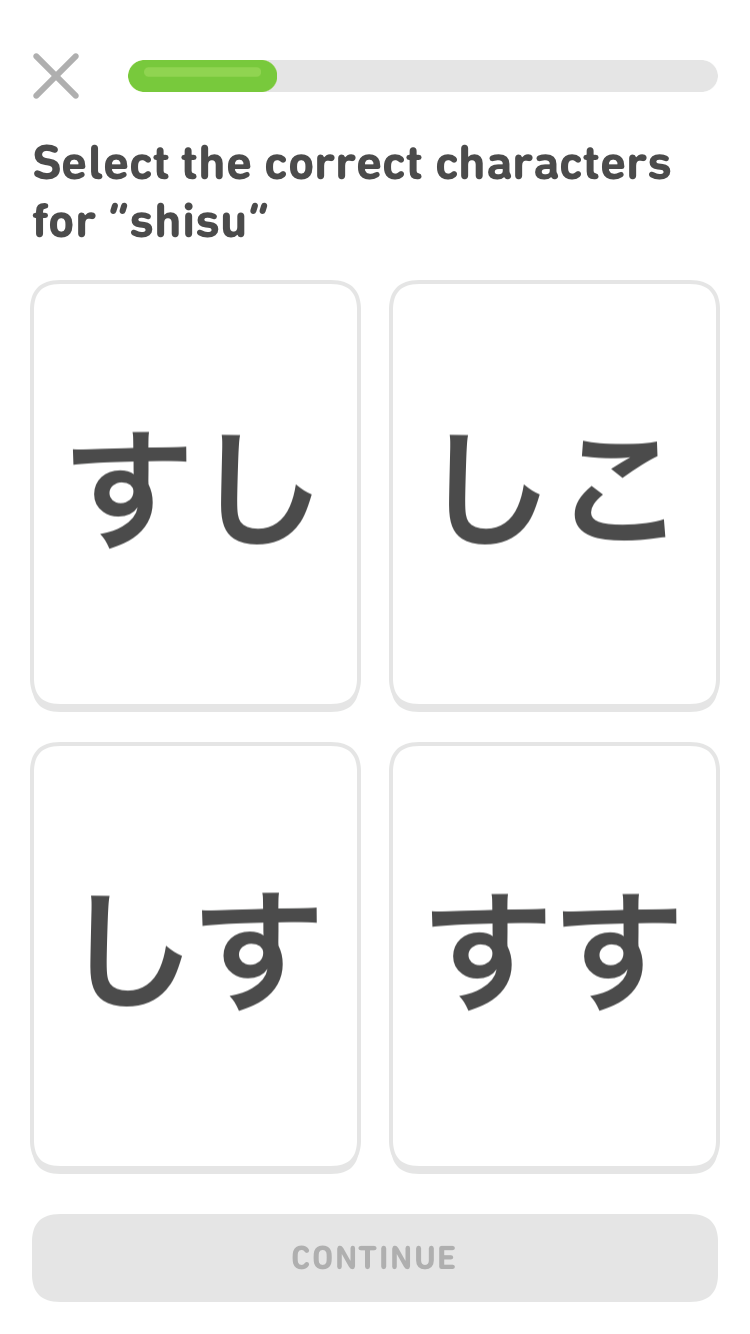
|
The Duolingo Japanese course introduces hiragana characters first—this helps learners become familiar with the sounds of Japanese and get to know the characters most often used for grammatical particles and common phrases. Katakana characters, which are frequently used in loanwords or names of foreign people/places, are integrated into lessons early in Section 1, and the more difficult kanji begin appearing later in Section 1, once the learner has a good command of hiragana and katana. We spread out kanji to avoid overloading learners with hundreds of kanji and to align with external standards. (International Japanese tests typically don’t require that learners know kanji for all the vocabulary!)
For learners who want even more support while they start learning to read Japanese, you can turn on romaji (the Roman alphabet spelling of Japanese). Go to your profile settings and look for “Show pronunciation.”
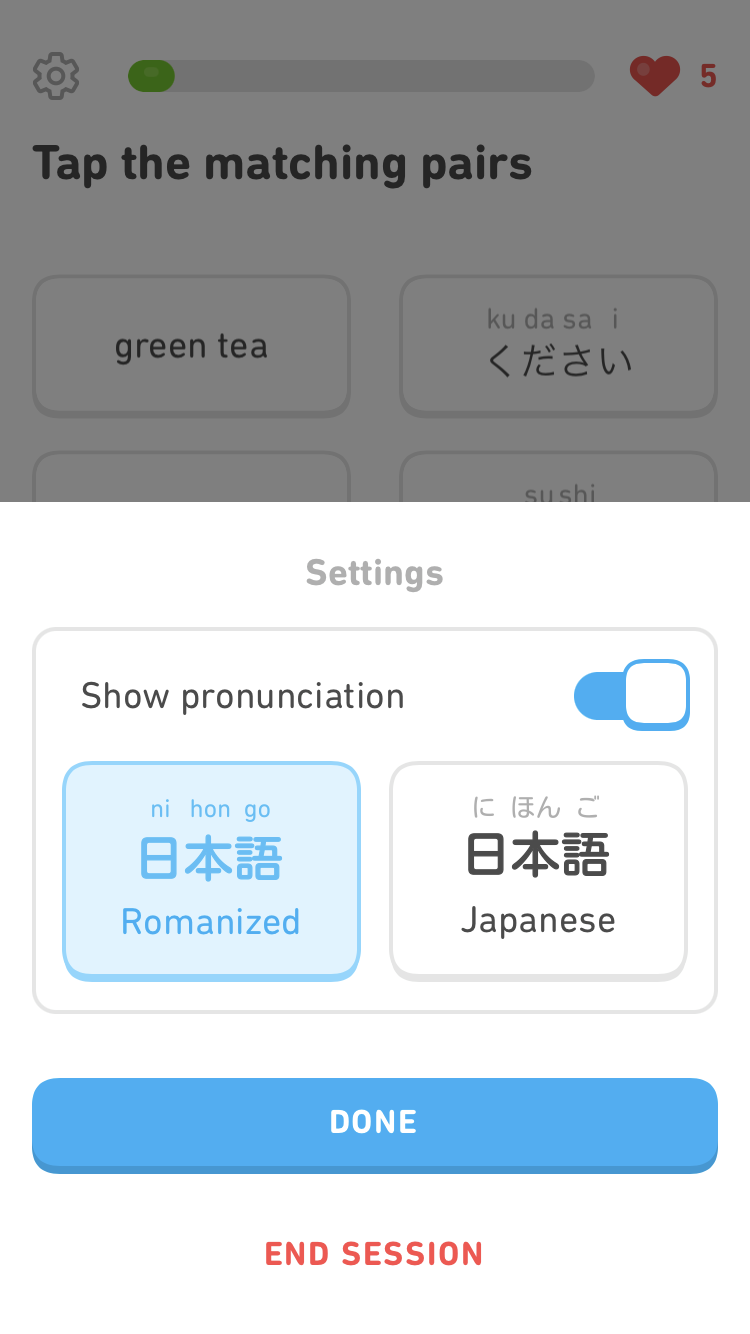 |
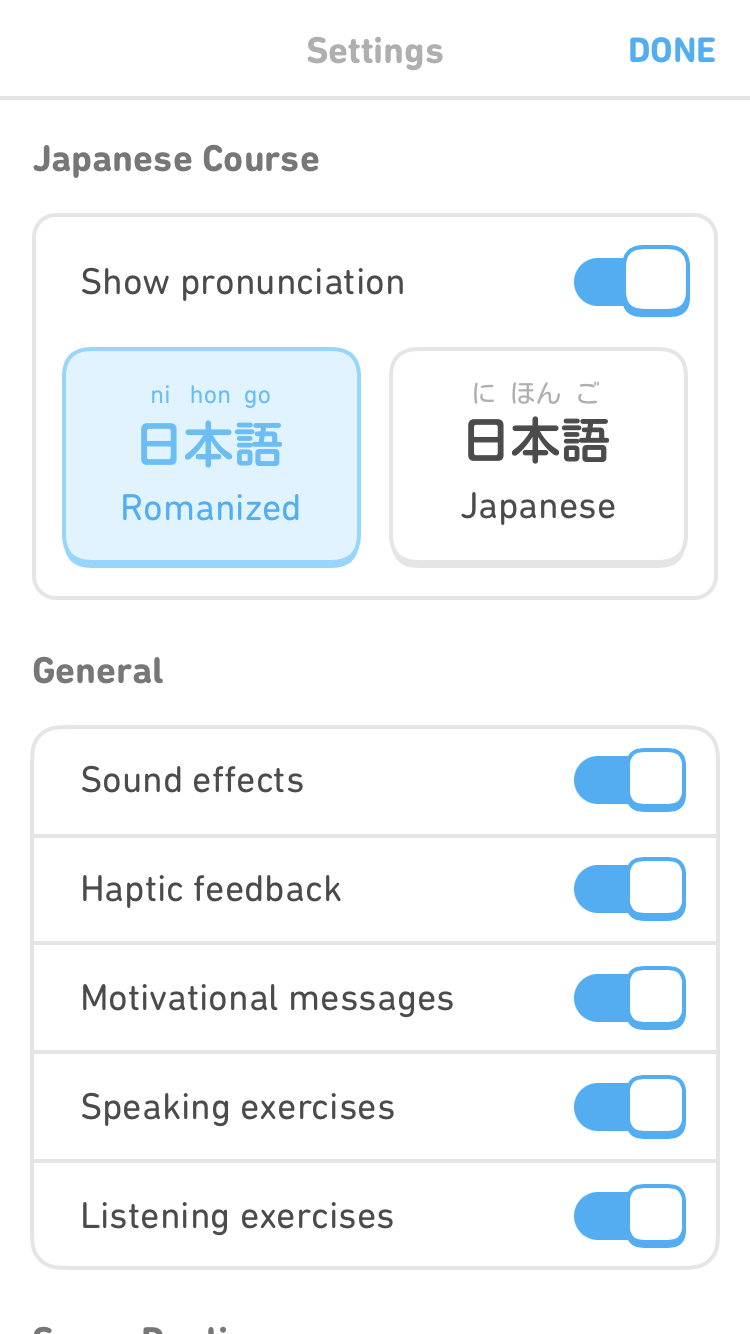
|
Why reading Japanese is so hard for learners
The 3 writing systems of Japanese have different rules, different uses, and all 3 can appear in one sentence! Since this can be challenging for beginners, we want to help you focus on one thing at a time. When you complete lessons in the main part of the course, you can focus your attention on the meaning of the sentence—and when you do lessons in the character tab, you can concentrate on learning how to read and pronounce Japanese characters.
Here are the basics about each writing system and what you need to learn Japanese characters:
Learning to read hiragana
Hiragana is the main writing system in Japanese, and each of the 46 characters is a base symbol that represents a syllable. It’s used for writing parts of Japanese grammar and commonly used phrases, and you’ll also see it written to explain how to pronounce kanji.
Even though learning hiragana characters can feel challenging to new learners, they are relatively straightforward to learn: Each character generally has a particular pronunciation. And that’s it! ✅
Learning to read katakana
Katakana characters represent the same sounds as hiragana, but these characters are used for emphasis, loan words, slang, and other proper nouns, like company names. Even though katakana and hiragana represent the same sounds, learners will find them used in different kinds of words!
Just like hiragana, katakana characters represent a specific sound or syllable, so it just takes some practice to memorize them all.
Learning to read kanji
Kanji characters are totally unlike hiragana and katakana: Rather than representing sounds, kanji mainly represent meaning.
A kanji character can sometimes be a word in itself, or it might be combined with other characters (from any of the writing systems) to form new words. For example, by itself 本 (hon) can mean “book” or “origin,” but the character is also used in the word for “Japan,” which is 日本 (nihon): 日 (ni) meaning “sun” and 本 (hon) conveying the meaning of “origin” in this case. Sun origin? In other words, the land of the rising sun, or Japan!
Another interesting example is 日曜日 (nichiyoubi) which means “Sunday.” Did you notice how it uses the character 日 twice, with two different pronunciations? First it’s pronounced as “nichi” and then at the end of the word as “bi.” And if you look really closely, the character in the middle also uses it as a component on the left – it just gets squished a little!
This means that a single kanji character doesn’t necessarily have just one meaning and pronunciation. Rather, the meaning and pronunciation of kanji depend on the words they’re used in. For a single kanji character, learners often have to memorize multiple meanings and pronunciations!
How Duolingo teaches each kanji character
There are thousands of individual kanji characters, and even more words that use them. Because of this, Duolingo teaches kanji as part of whole words and introduces them gradually. When you encounter a new kanji character as part of a new word in the course, the kanji becomes available for practice in the kanji tab. There you can tap it to see the words you’ve already learned that use that character! You’ll get lessons to familiarize yourself with its shape, to practice its use in words with their different pronunciations and meanings, and more. At the end, you’ll feel confident in reading and typing the kanji.
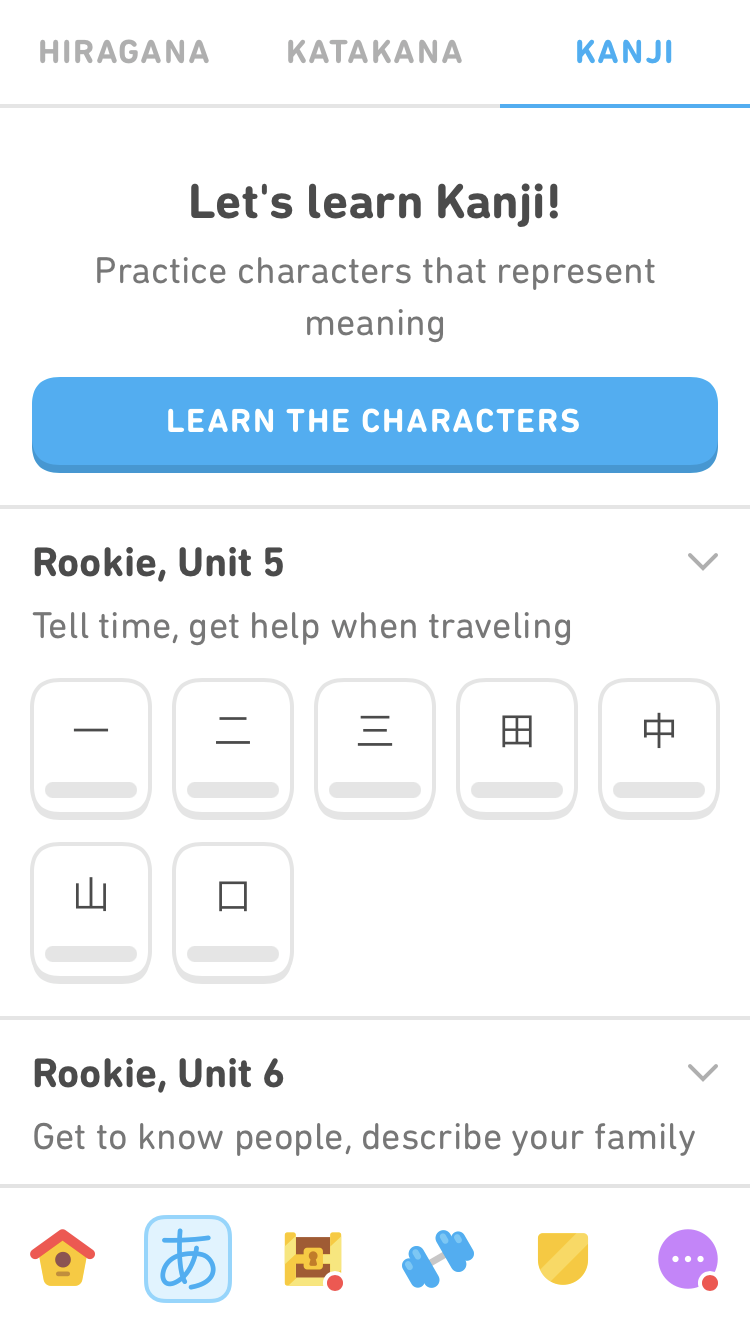 |
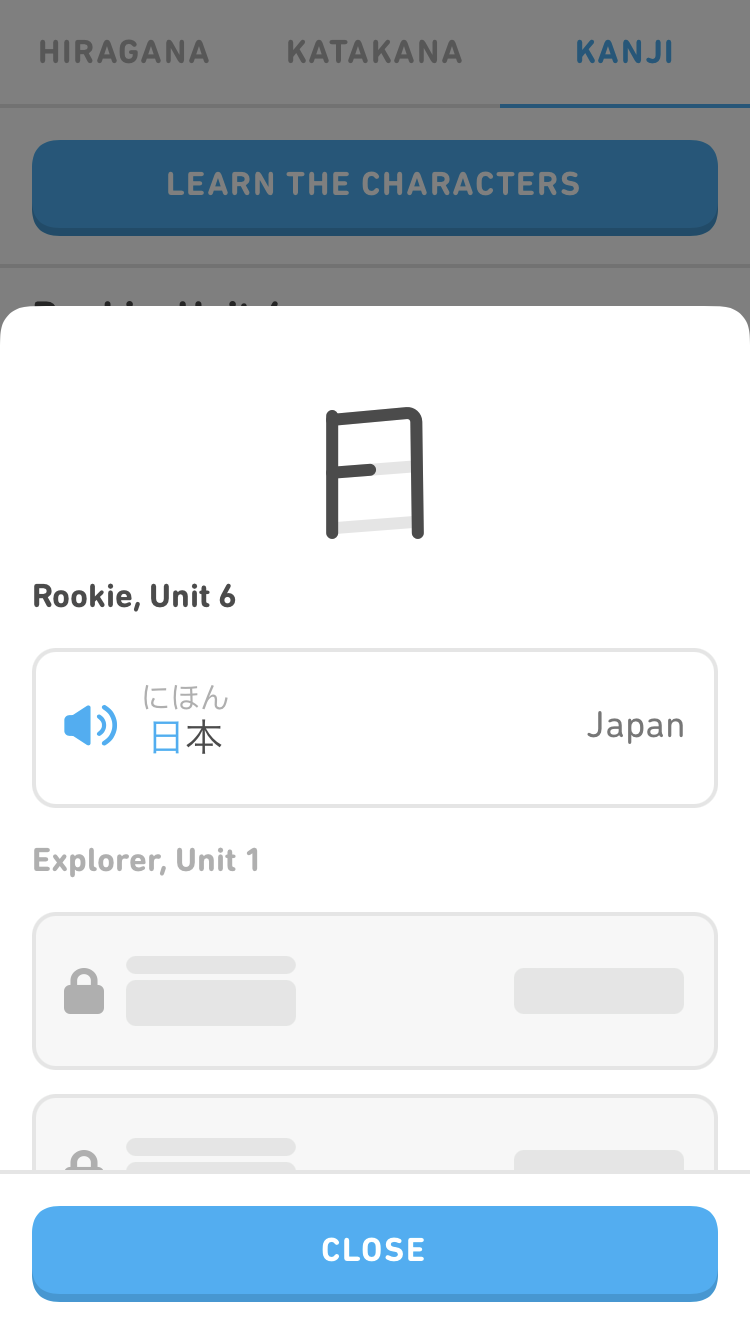
|
How Duolingo teaches kanji components
Another challenge for learners is that many kanji look similar, like 曜 (you, “weekday”) and 躍 (you, “dance”), often because they use the same or similar components. These two only differ in their leftmost component! Recognizing that the component 日 is often used in kanji related to time (日 can mean “day” and 時 can mean “o’clock”) makes telling these kanji apart easier!
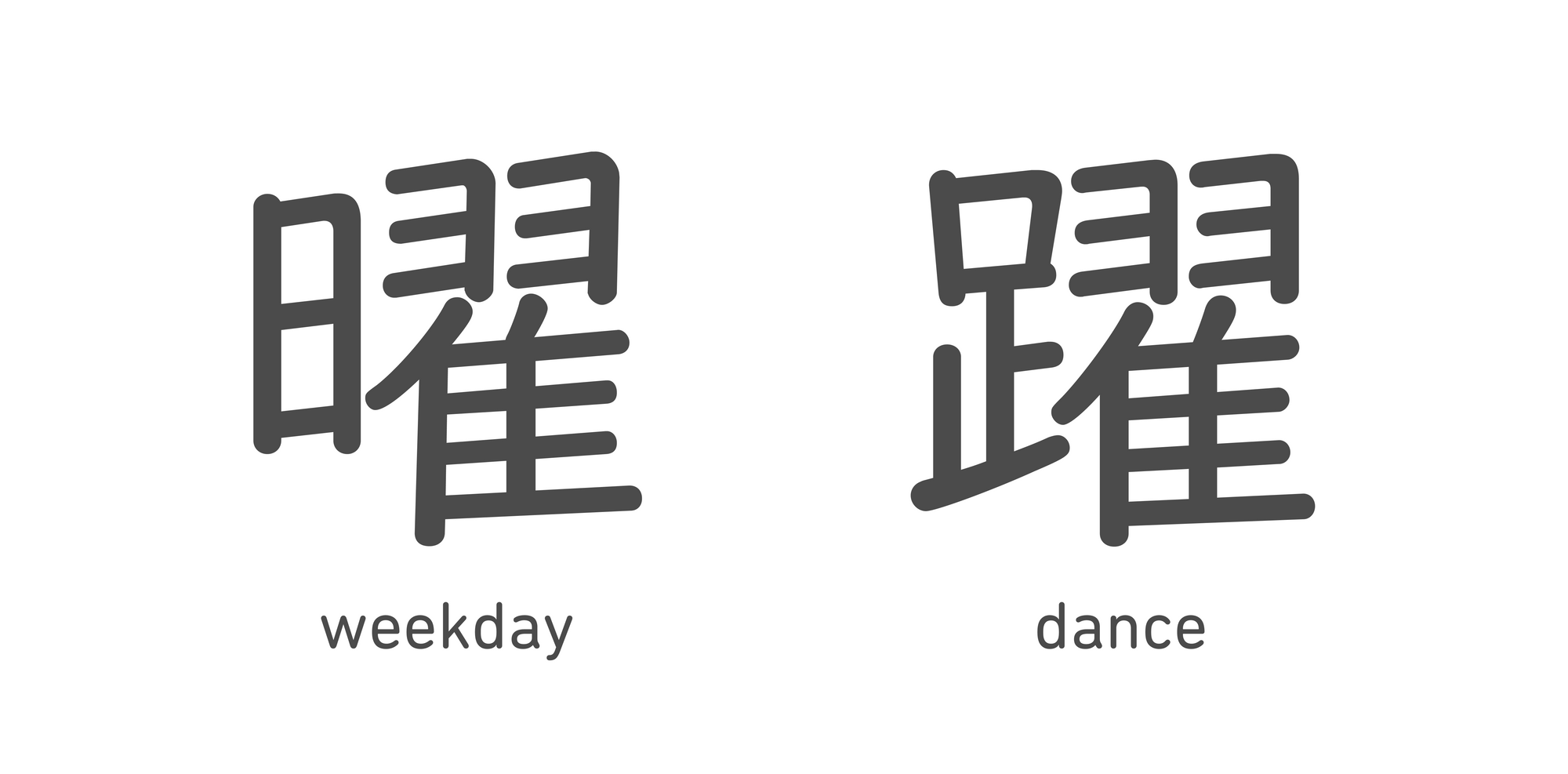
To help you focus on these components, we’ve added several new exercises to the kanji tab. There are tracing and freehand writing exercises, as well as puzzle exercises that will help you become familiar with kanji and their components. We’ll soon have new lessons that contrast visually similar characters, too.
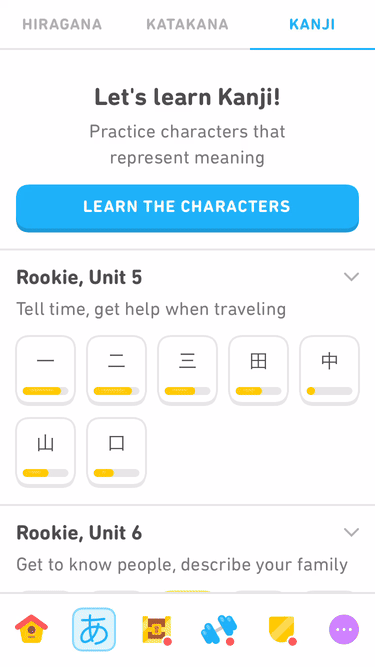 |
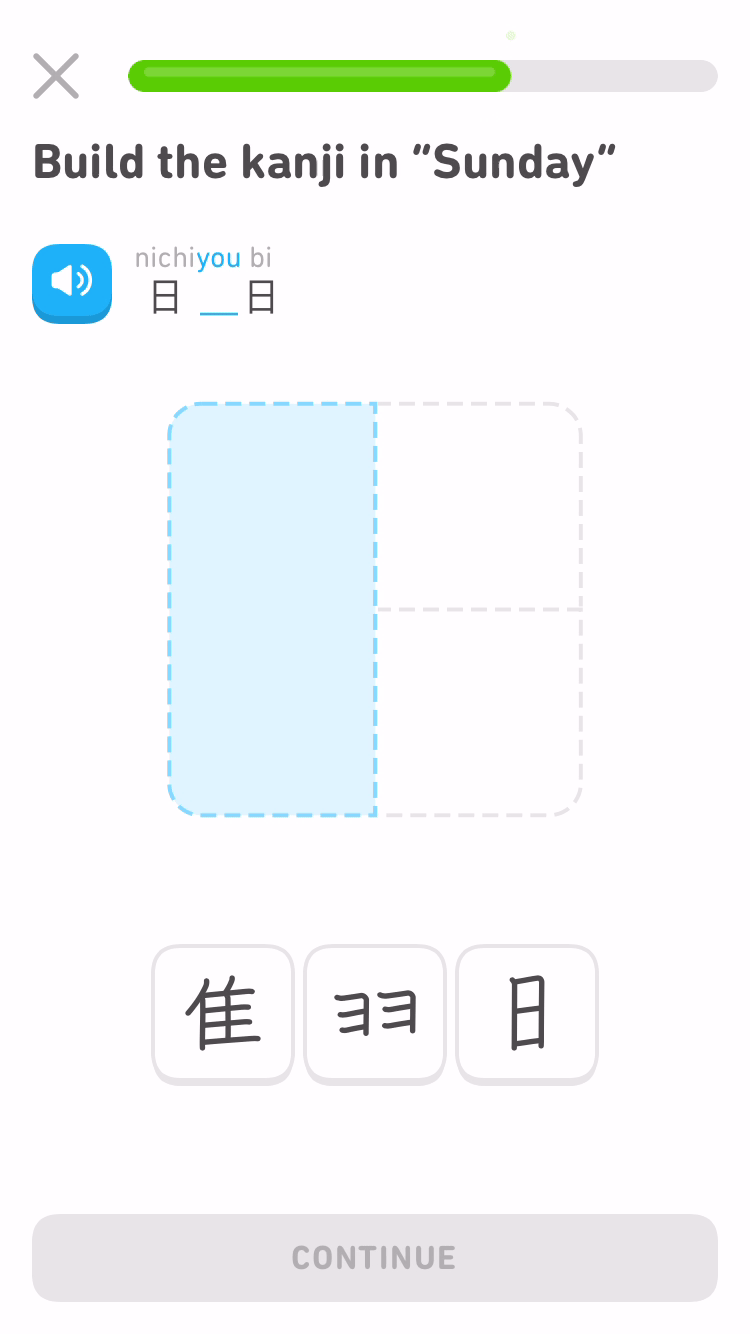
|
Overall, learning kanji is an important part of learning to read and write Japanese. Learners can think of kanji as a longer-term project than learning hiragana and katakana, but with these new exercises and lessons, Duolingo has made it a lot more fun and approachable!
Duolingo gamifies character learning!
Writing systems are as diverse as languages themselves, and now they can be just as fun to learn! The character tabs for hiragana, katakana, and kanji are available on iOS and Android for learners in our Japanese courses for English, and hiragana and katakana are available in the course for Chinese speakers. We’ll be bringing it to our learners on the Duolingo website next!
